Ned Hayes's Blog, page 21
May 25, 2016
An Interactive Evening with Ned Hayes and Friends
Browsers Bookstore in Olympia is excited to host an “Interactive Evening” with Author Ned Hayes, featuring notable local actors performing scenes from his bestselling novel The Eagle Tree.
The Eagle Tree by Ned Hayes (Little A) was a # 1 Kindle bestseller in Young Adult when it made its eBook debut in April 2016.
EVENT LOCATION:
107 Capitol Way N.
Olympia, WA 98501
[between 4th Ave + State]
360.357.7462 | andrea@browsersolympia.com
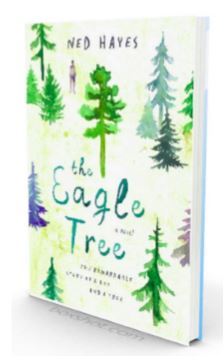 The highly praised novel will be in broad release at bookstores nationwide on July 5. The novel has already received accolades from autistic advocate Temple Grandin and New York Times bestseller Steve Silberman, author of Neurotribes.
The highly praised novel will be in broad release at bookstores nationwide on July 5. The novel has already received accolades from autistic advocate Temple Grandin and New York Times bestseller Steve Silberman, author of Neurotribes.
Bestselling author Ned Hayes will appear at a variety of schools, bookstores and public libraries on his first nationwide book tour in summer and fall 2016. Browser’s Bookstore is excited to be the first bookstore in this tour and is proud to host this unique evening of readings and performances from the playscript of a forthcoming stage production of this novel.
Actors featured in this bookstore preview performance include Amy Shephard, who has been seen on stage at Harlequin Productions, Olympia Family Theater, and the Broadway Center for the Performing Arts and Clarke Hallum, recently seen as “Wilbur” in Olympia Family Theater’s production of “Charlotte’s Web” and well known for his starring role in “A Christmas Story” at 5th Avenue Theater in Seattle. Also appearing in this “Interactive Evening” will be U.S. Fish & Wildlife biologist and expert in Northwest forest ecosystems, Emily Teachout.
Hayes was inspired to write the novel from his experiences teaching autistic children.
“How often do you see an autistic kid as the hero of a story?” Hayes said. “From working with these kids, I know they, and their parents, are uncelebrated heroes, and they each have a story. I wanted to tell a story about a different kind of hero.”
Readers who enjoyed Mark Haddon’s The Curious Incident of the Dog in the Nighttime or Jim Lynch’s The Highest Tide will enjoy this unusual and insightful coming-of-age novel, which is set in Olympia and features a number of Olympia landmarks and experiences. Olympia attendees at the “Interactive Evening” will recognize many local personalities and local references.
ACTORS AND OTHERS APPEARING AT BROWSERS BOOKSTORE
FEATURED ACTOR – Amy Shephard – JANET (MARCH’S MOTHER)
Amy Shephard is a longtime performer in the Pacific Northwest. She holds a Master’s degree in Applied Theater from the University of Exeter, UK. Amy acts, choreographs, and teaches with multiple theater companies in the south sound area, including Olympia Family Theater, Harlequin Productions, Animal Fire Theater, Broadway Center and Open Road Productions. Amy’s choreography, acting and singing has been seen most recently in Bryan Willis’s “Pellegrino Noir” and on Harlequin’s stage in “Stardust Christmas Blizzard.” Amy will next be seen on stage in Harlequin’s “Little Shop of Horrors” (June-July 2016). She is the founder of “StoryOly,” Olympia’s premiere storytelling event.
FEATURED ACTOR – Clarke Hallum – MARCH WONG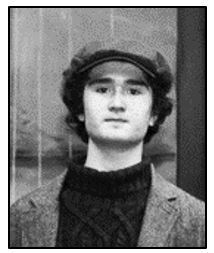
Clarke Hallum was most recently seen in the Olympia High School musical “Crazy for You,” and also starred this year as “Wilbur” in Olympia Family Theater’s production of “Charlotte’s Web.” Clarke is well-known for originating the role of “Ralphie” in the smash hit musical “A Christmas Story, The Musical” at 5th Avenue Theater in Seattle. He subsequently led the National Tour for “A Christmas Story” and is featured on the original cast album from Masterworks Broadway. Clarke is a recipient of the prestigious Jeff Equity Theater Award in
Chicago and serves on the board of Olympia Family Theater.
FEATURED SCIENTIST – Emily Teachout, U.S. Fish & Wildlife
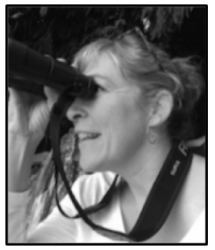
Emily Teachout is an endangered species specialist with the U.S. Fish and Wildlife Service. She has expertise in avian ecology and conservation. Emily was her office’s lead biologist for the listing of western yellow-billed cuckoo, and is currently working on the Marbled Murrelet Long Term Conservation Strategy for state lands.
ABOUT NED HAYES
Ned Hayes is a former teacher of autistic children and university instructor in American literature. 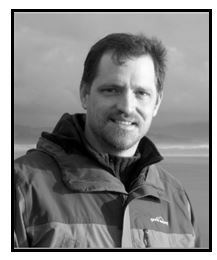 He holds graduate degrees in literature from Western Washington University in Bellingham and in creative writing from the Rainier Writing Workshop at Pacific Lutheran University in Tacoma. His previous novel, Sinful Folk, was nominated for the Pacific Northwest Booksellers’ Award. He has lived in the Pacific Northwest for most of his life and has made his home in Olympia Washington since 2003.
He holds graduate degrees in literature from Western Washington University in Bellingham and in creative writing from the Rainier Writing Workshop at Pacific Lutheran University in Tacoma. His previous novel, Sinful Folk, was nominated for the Pacific Northwest Booksellers’ Award. He has lived in the Pacific Northwest for most of his life and has made his home in Olympia Washington since 2003.
More about the event here: http://www.browsersolympia.com/
THE EAGLE TREE by Ned Hayes, is now available in print, e-book and audiobook from indie bookstores and from Amazon and Barnes & Noble.



> All about the story & history of THE EAGLE TREE
> Resources about topics in THE EAGLE TREE
> Book Trailer for THE EAGLE TREE
> Endorsements for THE EAGLE TREE
> Listen to a Reading of the book at the Rainier Writing Workshop
> THE EAGLE TREE is now available for purchase in print, e-book and audiobook
An Interactive Evening with Ned Hayes and Friends was originally published on NedNote
May 16, 2016
Book quote from THE EAGLE TREE for National Bike to Work Week...
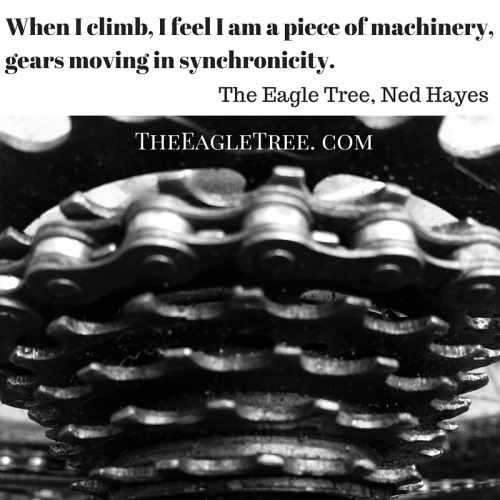
Book quote from THE EAGLE TREE for National Bike to Work Week 2016 – May 16-20.
Bike to Work Day is May 20
May 8, 2016
Book quote for Mother’s Day: “A large mother deer stood taller...
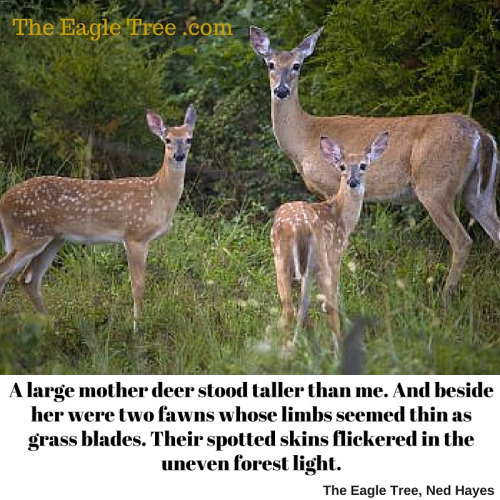
Book quote for Mother’s Day:
“A large mother deer stood taller than me. And beside her were two fawns whose limbs seemed thin as grass blades. Their spotted skins flickered in the uneven forest light.”
-- The Eagle Tree, Ned Hayes
April 22, 2016
Happy Earth Day – April 22 – with a quote from The...
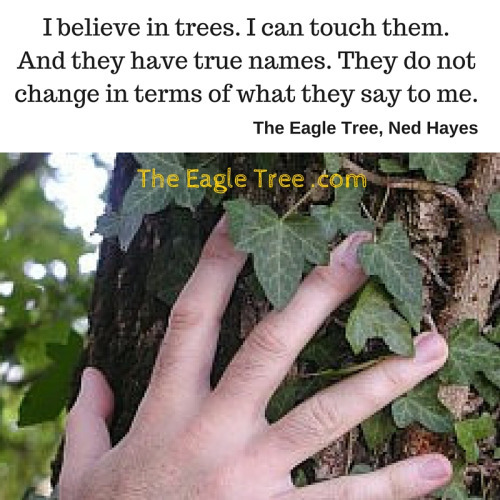
Happy Earth Day – April 22 – with a quote from The Eagle Tree.
(new book from Ned Hayes, on Little A)
April 18, 2016
"Black is the color that is no color at all.
Black is the color of a child’s still, empty bedroom...."
Black is the color of a child’s still, empty bedroom. The heaviest hour of night-the one that traps you in your bunk, suffocating in another nightmare. It is a uniform stretched over the broad shoulders of an angry young man. Black is the mud, the lidless eye watching your every breath, the low vibrations of the fence that stretches up to tear at the sky.
It is a road. A forgotten night sky broken up by faded stars.
It is the barrel of a new gun, leveled at your heart.
The color of Chubs’s hair, Liam’s bruises, Zu’s eyes.
Black is a promise of tomorrow, bled dry from lies and hate.
Betrayal.
I see it in the face of a broken compass, feel it in the numbing grip of grief.
I run, but it is my shadow. Chasing, devouring, polluting. It is the button that should never have been pushed, the door that shouldn’t have opened, the dried blood that couldn’t be washed away. It is the charred remains of buildings. The car hidden in the forest, waiting. It is the smoke.
It is the fire.
The spark.
Black is the color of memory.
It is our color.
The only one they’ll use to tell our story.”
- Alexandra Bracken, In the Afterlight (via bookoisseur)
April 17, 2016
Book quote:“The trees that I have climbed give me a hollow...
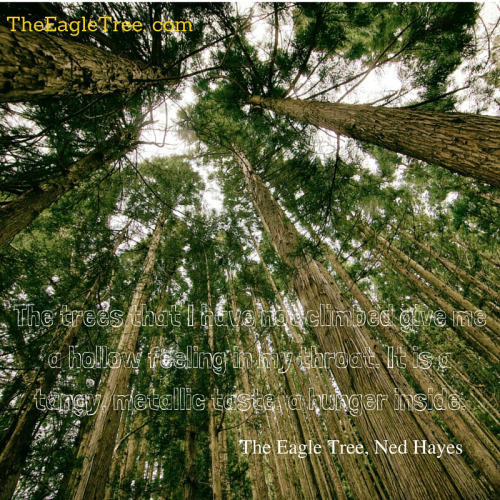
Book quote:
“The trees that I have climbed give me a hollow feeling in my throat. It is a tangy metallic hunger inside.”
– THE EAGLE TREE, Ned Hayes
April 16, 2016
A Narrator with an Unusual Voice - An Interview with Author Ned Hayes
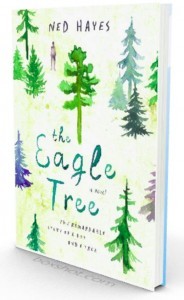 I was very happy to see this interview with a local Olympia arts journal appear recently in print. I’ve received permission to re-print the author interview here on my site.
I was very happy to see this interview with a local Olympia arts journal appear recently in print. I’ve received permission to re-print the author interview here on my site.
How did the idea of THE EAGLE TREE come to you?
Years ago, I taught a variety of children who were not neuro-typical. This means that they had a variety of unique and interesting perspectives on the world. One young man especially stayed in my mind for many years. I was inspired by his unusual point of view, and the very hard work he undertook to control what he saw as distracting or destructive behavior and to connect with people around him. I admired him greatly, and I hope a little of his voice is here in this book.
Just two years ago, a writer friend of mine here in Olympia introduced me to the real life “Eagle Tree” back in the woods, and the idea of this solitary amazing tree came together in my mind with the young man I knew years ago. The story emerged organically from that catalyst.
“The idea of this solitary amazing tree came together with the young man… the story emerged organically from that catalyst.” — Ned Hayes, author of The Eagle Tree

The real-life “Eagle Tree” exists then. How much else of the story is grounded in your real life in Olympia Washington?
Well, it’s worth noting that for the sake of the story, I moved the real life Eagle Tree all the way across town from the Evergreen State College – where it is really located – to the east side of Olympia, where I live. But there are many wooded areas on this side of town as well, and I think the Eagle Tree could easily be located here. So the geography of the story is somewhat misaligned with reality, but only slightly.
However, the story is very grounded in the Olympia I know and love. That’s why I’ve made sure to include Olympia institutions like “The Procession of the Species,” the United Churches (a real church here in town), and a unique school we have, the Olympia Regional Learning Academy (ORLA). In my story, March attends ORLA. In real life, he probably would be in a mainstream classroom at a public school, but again, for the sake of the story, certain changes were made to the fabric of reality!
What about the LBA Woods? You mentioned in your author’s note that the LBA Woods is a real place.
Right – one critical piece that I didn’t change is the fact that the LBA Woods here in Olympia were in fact slated to be bulldozed for a housing development. I wrote this novel when this was still on the books as a development. The woods were going to go.
Yet a group of local citizens came together and just this past year convinced the city to reserve the area as a wooded reserve. This wonderful group also pushed forward a local Parks initiative which will expand and preserve wooded areas in the City of Olympia. I take a walk in the woods nearly every day, and I am so grateful to this dedicated group for their tireless efforts. I had to include these woods in the story, and I am so glad that fiction became reality.
I think March Wong would be very happy as well!
“March is a human being, with the complexities and complications of our shared humanity…. I don’t think it’s helpful to apply some sort of label to a person.”
— Ned Hayes, author of The Eagle Tree


The Reason I Jump – a non-fiction book by autistic young man Naoki Higashida
In the novel, March, your narrator, is called “aspy” by someone who is bullying him. Later in the story, the newspaper states that he is a “disabled young man.” How would you describe March?
March is a human being, with the complexities and complications of our shared humanity. I believe I’ve accurately reflected how some people would see March. But I don’t think that’s an accurate reflection of how March sees himself.
I do think that it’s likely that March is on the autistic spectrum, but I know many people who are either on the spectrum or have other non-typical behavior, and I don’t think it’s helpful to apply some sort of label to a person. He may be different than many people, but that’s not to say his perspective is not equally valuable or equally valid.
I think it’s enough to say that March Wong is a human being, and let people discover for themselves how much they identify with his experience or find his perspective new and different.
“I think it’s enough to say that March Wong is a human being, and let people discover for themselves how much they identify with his experience or find his perspective new and different.” — Ned Hayes, author of The Eagle Tree

There’s one difference that you never explicitly name. March, by his very name, is an Asian young man. Why didn’t you specifically emphasize this identity as a plot point?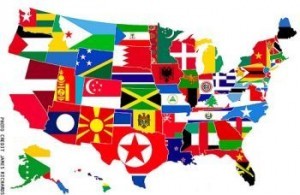
Again, March Wong is a human being. That’s his primary and most important identity.
March happens to be focused on trees and his attempts to find a place in his community and that’s the story I’ve told. Another writer might have told a different story about March Wong.
Sure, March is an Asian-American young man, and he explicitly is choosing the more “Asian” part of his name as his public identity. That’s part of the story: March is discovering and naming who he is in relation to other people.
But like most people in the United States, March doesn’t spend all his time thinking about his particular skin color or national origin. Like most people, March has concerns and a life that goes far beyond national origin or cultural identity.
“People who are not of European origin do not exist on the margins of the American story – they are the American story.” — Ned Hayes, author of The Eagle Tree

I think it’s vital to create fiction that has fully embodied human beings of various national origins and skin colors and identities. It is often through fiction that we see ourselves most clearly, and we need to start hearing all voices and all lives as fully embodied, rather than stereotypical “cultural activists.” People who are not of European origin do not exist on the margins of the American story – they are the American story.
If we don’t do this – if we just create and emphasize Euro-centric white characters – we do a disservice to our readers and we fail to enrich our culture and understand our national story.
“I think it’s vital to create fiction that has fully embodied human beings of various national origins and skin colors and identities. It is often through fiction that we see ourselves most clearly, and we need to start hearing all voices and all lives as fully embodied…”
— Ned Hayes, author of The Eagle Tree

The story is about March’s self-discovery and maturation. In that regard, it is a classic coming-of-age story. How did you find a new approach to that classic form?
I’d like to think that I’ve been honest to March and shown respect for his unusual perspective, and this point of view gives us a radically different set of insights into that time of change. Many classic coming-of-age stories, from J.D. Salinger’s Catcher in the Rye to WONDER by R.J. Palacio to Jim Lynch’s The Highest Tide have times of introspection and explanation to the reader about how important and meaningful the changes are to the main character and what it all means. In fact, Catcher in the Rye’s title is taken from just such a reflective and contemplative section.
March’s story, in contrast to that type of introspective story, contains almost none of that “explanatory” material. That’s because March himself doesn’t overtly explore himself in that way. By removing the explanation of what happens, I think I’ve followed the even-more-classic writing dictum of “show don’t tell”, and I’ve been true to March’s natural predilection to experience reality and not indulge in flights of fancy or flights of imaginative exploration. He tends to stay grounded in a certain reality. And since you mostly just experience what he experiences – even on the last page – the reader must draw their own conclusions about what March is experiencing and what it all means.
It may be a coming-of-age novel, but how that works and what it all means is left as an exercise for the reader.
“[The Eagle Tree] may be a coming-of-age novel, but how that works and what it all means is left as an exercise for the reader.”
— Ned Hayes, author of The Eagle Tree

The experiential nature of the story is clear, but you do reference at least one imaginative artist – Annie Dillard. Tell us more about why Dillard’s words are included.
In the 1990s, I immersed myself in Annie Dillard’s work. In fact, when I applied to graduate schools, I chose Western Washington University in Bellingham because she taught at Western for some time, and she had also published several books set in Bellingham. I wanted to follow in her footsteps.
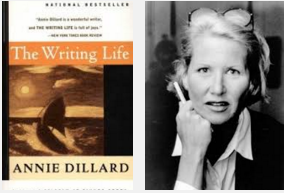
Annie Dillard
What Annie Dillard does so marvelously is to reflect on the beauty of nature and the mysteries of science without either softening the edge of the transcendent nature of our experience or dumbing down the science.
Pastor Ilsa in my book is a reflection and communicator of Dillard’s vision in her life. Because March is not that reflective on an overt level, Ilsa is my way of reflecting on March’s story and demonstrating that this very human ability to transcend is very much a part of March’s reality.
I know that March himself would not seek out Dillard – she is not by nature his kind of writer – but I felt that giving him access to her perspective might wake up a new approach or a new desire in him. And in fact, it did, and March took action based on that reading of Dillard.
I don’t know if I’ve followed in Dillard’s footsteps here, but I hope that I’ve honored her work and influence in this story.
Now that March’s story is published, what other stories do you plan to tell? What other characters will you be bringing to life?
I have a habit of challenging myself to tell stories that are removed from my personal experience and that stretch me as a reader and as a writer.
My previous novel Sinful Folk was written from the viewpoint of a cross-dressing woman, who is living in the 14th century as a serf. THE EAGLE TREE is, of course, written from the point of view of a fourteen year-old who is not neurotypical. I think voices from other times, places, or worldviews show us ourselves in a new light and allow us to grow from that experience.
I’ve been writing first drafts of several different stories recently. We’ll see which one blossoms and grows into a new novel. But you can rest assured that I’ll keep writing stories that provide unique and different perspectives.
“I think voices from other times, places, or worldviews show us ourselves in a new light and allow us to grow from that experience.”
— Ned Hayes, author of The Eagle Tree

THE EAGLE TREE by Ned Hayes, now available in print, e-book and audiobook.
> All about the story & history of THE EAGLE TREE
> Resources about topics in THE EAGLE TREE
> Book Trailer for THE EAGLE TREE
> Endorsements for THE EAGLE TREE
> Listen to an Author Reading of THE EAGLE TREE at the Rainier Writing Workshop
> THE EAGLE TREE is now available for purchase in print, e-book and audiobook
A Narrator with an Unusual Voice – An Interview with Author Ned Hayes was originally published on NedNote
April 8, 2016
mariethelibrarian:
February book photo challenge
Day 24:...

Day 24: Heartbreaking
Its a wonder I still have a heart left after reading all of these and so many more
YA novels for the win! #YA
April 4, 2016
Book quote: “At forty feet, the sky is entirely black, but now...
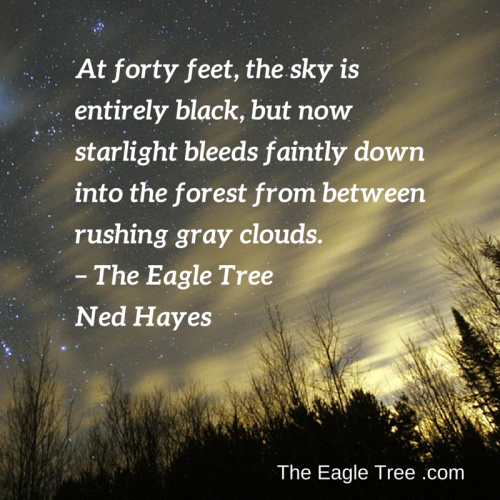
Book quote:
“At forty feet, the sky is entirely black, but now starlight bleeds faintly down into the forest from between rushing gray clouds.”
– The Eagle Tree, Ned Hayes
April 2, 2016
Most PoC in these paintings are slaves/servants. Why would you be proud of that? People of color will never be European.
Wowww. I mean, I get messages like this all the time, but this says so much about YOU and your worldview, and basically nothing about anyone else. Much less whoever you intended to insult with this.
I mean, is “being European” some kind of accomplishment? It’s obvious you seem to think that, so much so that you imagine that people who aren’t must somehow secretly long to be. There’s little to no logical consistency between any statement you’ve made here.
All I see is regurgitated racist lies that are obviously false, and demonstrate with embarrassing clarity that your identity is an empty construct based entirely on what it is not, and who it excludes. The smallness of your worldview would be pitiful if it didn’t have so much violence behind it.
You can cover your eyes and throw a tantrum, but the truth stays true, and European history still includes a fascinating, complex, and mind-blowingly diverse cast of human beings throughout all aspects of society.
from medieval European imaginings of Jesus

To the Virgin Mary
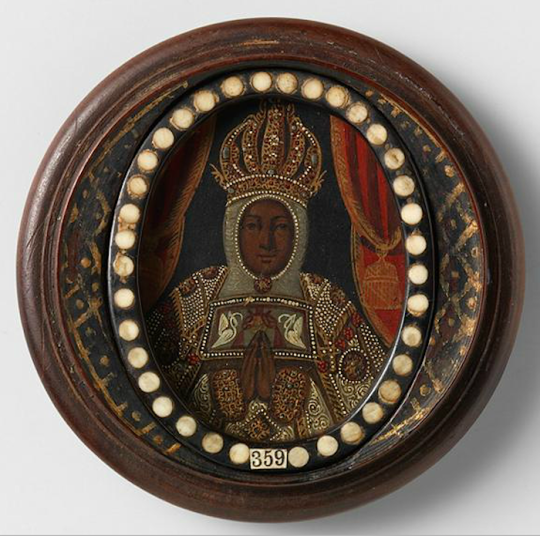
to the Gondoliers of Medieval and Renaissance Venice
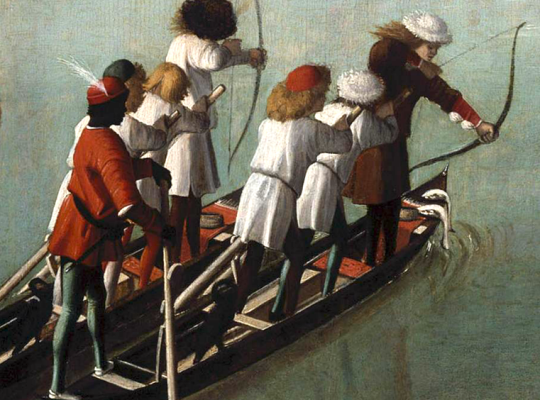
The serfs in Russia

The entourage of the Holy Roman Emperor

The holiest embodiments of virtue

Studies in beauty and grace
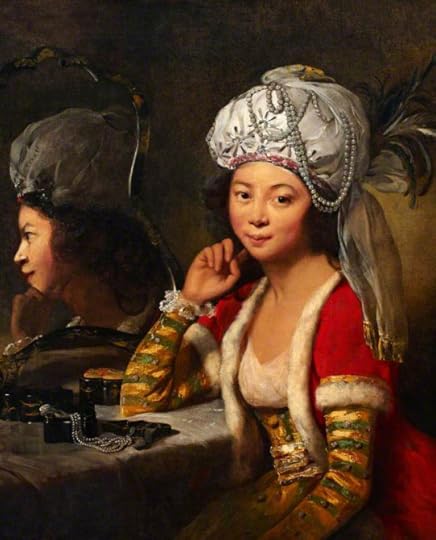
From champions of military might

to diplomatic negotiators of peace

From the most sacred
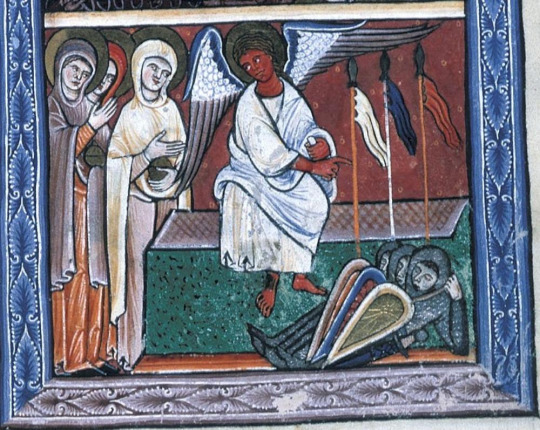
to the debauched and profane
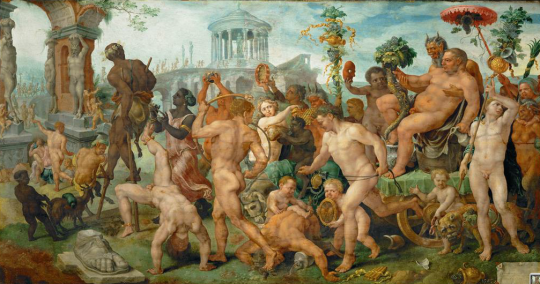
History is beautiful, and diverse, and full of so much immense possibility that I never really stop being in awe of it. If you can’t see the beauty in that, that’s your problem.




